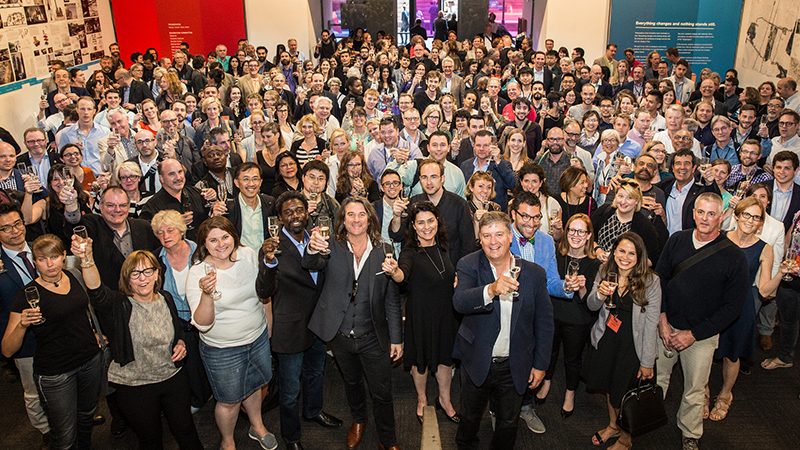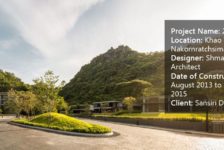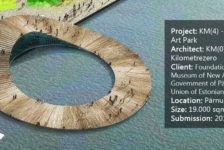Dear graduating landscape architecture student,
I am thinking of you all as you graduate—Congratulations and well done!
You have spent a lot of time and money the last several years to get your degree. You have worked hard and are entering a noble and fulfilling profession, one that can provide a good life for you. I made a career change to become a landscape architect, and I have never looked back. I have traveled and lived in ways beyond my wildest dreams. I experience my world and those around me in a more enriching way than I ever could have imagined because of my training and work as a landscape architect. This is there for you too.
You are also entering the workplace in an epic time of uncertainty from the COVID-19 pandemic. Now the really hard work begins. No doubt you are anxious about finding a job and overwhelmed with the current economic outlook and state of the world. I can’t say that everything will work out the way you thought it would or want it to and that it will not be hard, but I do want to leave you with a few thoughts from my own experience to give you encouragement and perspective to persist and pursue your dreams of being a landscape architect and making a difference in people’s lives for the better. So please remember:
You are uniquely trained and talented as designers.
- Engineers design with concrete, architects with “bricks and mortar”, landscape architects with land, soil, water, and plants.
- We are all systems thinkers but landscape architects uniquely design for landscape systems—for natural processes, natural resources, and people; for both natural and cultural systems.
- We create the surroundings and views that connect people to each other and to nature and we design habitat for other living species.
- We design at all different scales: from the backyard, to the neighborhood, city, region, and globe.
Now more than ever, the world needs what landscape architects have to offer.
We are human beings and humans need to connect with each other and be outside. Landscape architects need to show our value in a way that others are open to receiving what we have to offer because no matter how you define sustainability—zero carbon, zero waste, biodiversity, livability—you cannot achieve it without considering landscape solutions.
- Use SITES to help you design to achieve sustainability.
- Use the One Planet Principles as your benchmarks and guide to develop projects within our fair share of resources.
- Use the LAF Landscape Performance Series for precedents and to help you show the value of sustainable landscape solutions to a wide variety of decision-makers and increase your value to an employer with this approach.
There are many ways to practice.
- Traditional private practice provides an invaluable foundation to a profession that takes a lifetime to master, but be open to look at other sectors to practice in as well.
- Federal agency landscape architects influence and impact millions of acres of land, millions of people’s lives, and billions of dollars in contracts.
- Municipal agency planners and designers influence the places we live, work, rest, and play and need your unique training to ensure a robust landscape framework that adapts to climate change, is fair and equitable for all, and ensures the health, safety and well-being of all citizens and communities.
- Environmental non-profit organizations have traction from the backyard to Capitol Hill and look for holistic problem-solving and spatial talent to translate and give form to policy ideas, programs, and projects. Check out idealist.org and look for different position titles such as “program manager”, “advocate”, “community outreach and engagement”, “analyst”, or “planner”. It may not be design in the traditional sense, but the work may be educational and rewarding for you at this time.
- When looking at a multi-disciplinary firm, be careful to understand their vision and value for landscape architecture and your role. Make sure you aren’t the only landscape architect. A multi-disciplinary firm that has landscape architects leading conceptual design for other disciplines is a tremendous opportunity.
There are many places to practice.
Look outside your home area. Work abroad. There is more than one way to do something and until I lived abroad I didn’t really understand other ways of approaching or solving a problem, or more importantly what culture was.
Don’t waste a good recession.
- Research, volunteer, keep learning— you can’t know everything you need to know with your degree. Consider earning additional certifications such as ISA certified arborist and EcoDistricts, or accreditations for SITES and Green Roof Professional (GRP), or joining networks such as SEED.
- Talk to other landscape architects and learn from informational interviews even if they do not have a job opening now. Ask them about their career path and how they got their job and what they like (and don’t like) about it. Remember you are looking for the right place for you to learn, grow, and contribute, and are interviewing them too, and things will get better at some point and may turnaround quickly so you want to be ready.
- Take other “off-path” jobs with the understanding that everything is a building block and nothing is wasted. For example:
- Brian Jencek, now Director of Planning at HOK, in this LAF webinar said when he graduated during an economic downturn he took a job working on a loading dock.
- Throughout the month of May on Fridays at 1pm ET, tune in to LAF’s Instagram Story to hear what LAF Olmsted Scholars who graduated in the aftermath of the 2008 financial crisis did to stay on track.
- Volunteer on a political campaign. It is important that people who represent our values and priorities as landscape architects are elected to office and we have valuable skills to help them: community engagement; knowledge about the environment, transportation, housing, and many other issues; and showing what their policy ideas will look like on the ground. I volunteered on a congressional campaign in between careers and learned invaluable lessons that help me to this day. It was eye-opening and fun.
Continue to nurture and sustain relationships with your graduating class and other landscape architects.
This can be done through ASLA, LAF, TCLF, and other networks. You are part of a larger group of landscape architects and a powerful critical mass. We want to learn from you. We are in this together and want you to succeed. You give us hope. You are our future. Stay in touch and stay connected.
And finally, remember this time is but one dot in the big timeline of life.
It’s a messy time, even before the pandemic. But usually things need to get messy before they get better and change happens. Just like your design process, it takes many iterations to get it right and represented in a simple and easily understandable way. For inspiration keep the New Landscape Declaration and its predecessor, the 1966 Declaration of Concern close at hand and go forth with confidence to do whatever you can to help create a new and better future, with our values and priorities leading the way.
With gratitude and best wishes,
Barbara Deutsch
CEO, Landscape Architecture Foundation









J. Robert (Bob) Wainner
I wish ALL recent LA Graduates the “Best of Luck”. But, here’s the problem I see now (besides the COVID-19 virus slowing design work down)….,.I counted (72) U.S. Universities that offer Landscape Architecture Degrees & (6) Universities in Canada. I’m guessing the average size of each Graduating Class is approx. (45) Graduates…..so, that’s what, approx. 3,465 LA Graduates searching for their first job in Landscape Architecture.
Although, I have sincerely enjoyed my 42+ year career practicing Landscape Architecture…..and still practice from time to time…..I’m just glad I’m not a recent LA Grad. in this job market.
I do know of a very few handful of Landscape Graduates, who, after maybe 1 or 2 years of experience designing for a Licensed Landscape Architect…..they establish their own Private Practices. IMO, a couple of years of experience working for a Landscape Architecture Firm is just not enough experience to go out on your Own. Having an LA Degree, whether 4 or 5 years is only the very basic knowledge LA Graduates need. Getting experience in the REAL World….any experience you can get will be helpful.
I guess I was lucky to have graduated with my Landscape Architecture Degree in 1977….the job market was pretty good & not too many dips in the economy over the past years. I spent (15) years designing for (2) different Landscape Architecture Firms…before I went out on my own @ the age of 41 (I did serve 4 yrs. in the U.S. Navy prior to enrolling in the LA program @ Texas A&M University. And, I was glad I had that experience “before” I went out on my own.
I read an article just last week on-line……The article had detailed stories written by (10) different Landscape Architects who (after working for a couple of Landscape Architecture Firms….established their own LA Firms). Here’s what I found interesting, but, not at all surprising…..Here is a list of the Number of Years of Experience each of those (10) LA’s had BEFORE they established their own LA Firms…….18, 12, 9, 15, 12, 15, 10, 7, 13 and 9 years. Do you see the “trend” here? Over the years, I have always believed that “nobody can learn Landscape Architecture on their own”. Well, maybe if your name is “Fredrick Law Olmstead”, you can…but, not for the rest of us. We need a period of mentoring, learning.
Again, the problem I see is…..WHERE are almost (3,500) recent Landscape Architect Graduates going to find employment? In any related field? This year, next year and the following years? I do realize that every year, a certain number of LA’s do Retire and some decide to choose another Career…..but, looks like a TON of completion, to say the very least.
A couple of suggestions for NEW LA Graduates when job seeking. Be SURE you have an outstanding Portfolio (and only include your very BEST samples)…..samples of your Computer Software skills, Color Rendering abilities, Hand Sketching Skills, etc. Also, make sure your Resume’ is very professional. I know of a BOOK you can buy for less than $10.00 (Author is Patricia Drain)….Title: “Hire Me”. This book takes maybe 30 minutes to read, but, it tells you everything you need to know to give a SUPER job interview…which is critical, because, you just don’t know how MANY job interviews you’re going get. One of the things that author states in her book is…..An employer will make up their mind about hiring your or not….within the first 8 seconds after they first lay eyes on you….so yes, “First Impressions definitely do count”.
GOOD LUCK to all of You!
My Best Regards,
J. Robert (Bob) Wainner
Texas A&M University – Class of 1977